Berkeley Voices: Take the first Black history tour at UC Berkeley
February 1, 2024
Follow Berkeley Voices, a Berkeley News podcast about the people and research that make UC Berkeley the world-changing place that it is. Review us on Apple Podcasts.
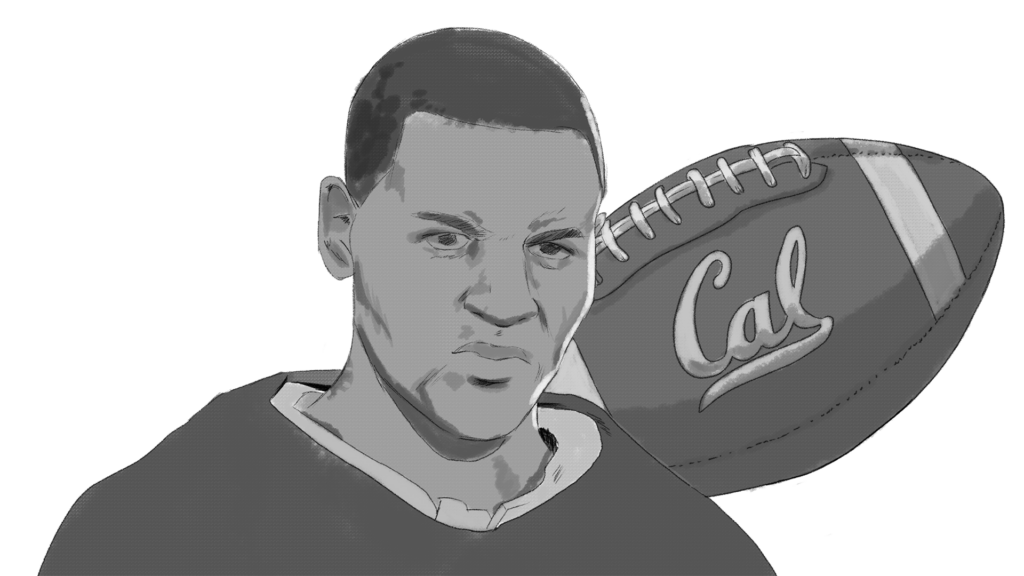
Illustration by Heaven Jones
The self-guided Black history tour at UC Berkeley begins at Memorial Stadium, where student Walter Gordon was a star of the football team more than 100 years ago. It then weaves through campus, making stops at 13 more locations, each highlighting an important person or landmark related to Black history.
There’s Ida Louise Jackson Graduate House, named in honor of the first African American woman to teach in Oakland public schools. Next is Barbara Christian Hall, named for the first Black woman to be granted tenure at Berkeley. Other stops include Wheeler Hall and Sproul Plaza, where Black visionaries, like James Baldwin and Martin Luther King Jr., gave famous speeches.
“Just knowing this history, walking around campus and knowing it, you really feel like you belong,” said student Daniella Lake, who’s on the Black Lives at Cal team that created the tour. “Black people have been here for the past 100 years, and if they were doing all these amazing things then, I can surely do it now.”
You can find the self-guided Black history tour on Black Lives at Cal’s website. And soon, on the site, you’ll also be able to sign up for upcoming in-person walking tours.
Anne Brice: This is Berkeley Voices. I’m Anne Brice.
The self-guided Black history tour at UC Berkeley begins at Memorial Stadium, where student Walter Gordon was a star of the football team more than 100 years ago.
Daniella Lake: Walter Gordon, especially, is one of my favorites because he was the first all-American football athlete in the history of the University of California.
Anne Brice: Daniella Lake is a fourth-year Berkeley student in media studies. As an audio producer of the tour, she voiced many of its stops.
Daniella Lake: He was also the city of Berkeley’s first Black policeman. And, like I mentioned, the first Black student to graduate from the law school and then a federal judge and then the governor of the Virgin Islands.
And he just did it all and was so multitalented. And I just love that so much because it also shows that you can have multiple interests and you can succeed at different things. So I just love, love hearing his story.
Anne Brice: The Black history tour was created by Black Lives at Cal, an African Thriving Initiative that publicizes, celebrates and defends the legacy of Black people on Berkeley’s campus. The multi-year initiative is a collaboration between the African American Student Development Office and the Institute for the Study of Societal Issues.
The tour weaves through campus, making stops at 14 different locations, each highlighting an important person or landmark related to Black history.
Among the stops are Ida Louise Jackson Graduate House, Barbara Christian Hall, the Campanile, Sproul Plaza and the law school. Berkeley student Heaven Jones created original artwork for each stop.
Daniella Lake: I feel like it has helped me feel welcome on campus. I know a lot of students, especially students of color, Black students, feel a lot of imposter syndrome. And I feel like with this tour, just learning the history really helps combat that.
Because when I look at all these different parts of campus — when I look at Memorial Stadium, I see Walter Gordon and how accomplished he was and all the things he did. When I walk on Sproul Plaza, I hear MLK’s speech and I think about how an undergraduate student suggested renaming the ASUC Student Union to the MLK Jr. Building.
So just knowing this history, walking around campus and knowing it, you really feel like you belong. Black people have been here for the past 100 years and if they were doing all these amazing things then, I can surely do it now.
[Music fades out]
Anne Brice: Gia White, who has been on staff at Berkeley for more than 30 years — first as a student, then a staff member — came up with the idea of creating a Black history tour for the campus after writing an essay about the first African American women who attended Berkeley.
Gia White: Most of these students and their families came during the Great Migration and it was a time of hope. But then they ran up against the version of California that still had so much prejudice and so much racial and systemic bias.
Anne Brice: Before the self-guided tour, Gia had given several pilot Black history walking tours through campus that she had researched and designed. Then, she modified it to be the self-guided version. That’s when Daniella joined the effort and took the role of producing the audio for the tour. Now, both guided and self-guided tours are offered for the campus community and the general public.
Each stop of the self-guided tour has a two- to four-minute description. Stop 11 remembers Vivian Rogers, who, in 1909, was the first African American woman to graduate from Berkeley. She died at age 29 from typhoid fever at the very beginning of her teaching career.
Gia White: She was such a promising young woman whose father was a slave, who came to California and made his fortune as a miner in the Stockton area. And she came to Berkeley and she got her degree in letters — they called it letters at the time.
I think about her a lot and I think about her life and how it was cut short and her potential, which was really chronicled in her home newspapers in Stockton.
And I like to tell her story because I also imagine what it must have been like for her to be on campus. She was a very brown-skinned girl. That, I’m sure, was not easy.
[Music fades out]
Anne Brice: Another person on the tour who Gia thinks about is Ida Louise Jackson, who has a graduate house on campus named after her.
Gia White: But now, because I’m doing this research, I realize: Wait, OK, I do this number calculation of the years I was there, and I think: She was still alive. I could have interviewed her. I could have met her.
I didn’t know anything about her, though. And I think this is the kind of information that I think, wow, we really need to capture those stories. And if it weren’t for the oral history project at the Bancroft that took her oral history and other Black alumni, we would know hardly any of this.
So I just realize the importance of capturing those histories and passing along that information generation to generation.
Anne Brice: For Daniella, learning about the campus’s rich Black history has reminded her of everyone who came before her and how much they accomplished.
Daniella Lake: I just think it’s really inspiring to think about all the things these people achieved, even when they were the only ones. To be the first is a beautiful thing because you’re blazing a trail.
But that’s also kind of terrifying, I’m sure. I mean, I can’t imagine what it feels like to be the only person who looks like you. And obviously, I have experienced it in classroom settings, but just their experience of it back then was just so much different, you know, much more hostile.
Anne Brice: Both Gia and Daniella hope that the Black history tour at Berkeley is only the beginning.
Daniella Lake: I hope that, with all our work and in the future, I hope that it’s normal and the standard to know about the Black history of our campus. And I hope that our website will really dive deeply into different time periods. You know, maybe you can click on the civil rights era. What was it like to be a Black student on campus then? Or the people who have visited, like MLK Jr.
You can look at categories of Black athletes, Black people in STEM. You can look at the history of Black Greek life. Just to see Black life on campus all in one place — that would just be so, so cool.
Gia White: I agree with Daniella, you know, my goal and just to think 20 years from now, what’s it going to be like then? That it would just be normal, that yeah, of course you take a Black history tour and, of course, students know their history and they know about Ida Louise Jackson and Walter Gordon and that it’s just sort of regular, like they know that Oski’s the mascot.
And then I will be, hopefully, still around and I get to look back and say, “Wow, I had some part of that, of people knowing about this legacy, and that it inspires others and that the baton is being passed along. That would be wonderful.
Anne Brice: You can find the self-guided Black history tour on Black Lives at Cal’s website at blac.berkeley.edu. And soon, on the site, you’ll also be able to sign up for upcoming in-person walking tours.
[Music fades out]
I’m Anne Brice, and this Berkeley Voices, a Berkeley News podcast from the Office of Communications and Public Affairs at UC Berkeley. If you like listening, please tell a friend or review us on Apple Podcasts or Spotify. You can find all of our podcast episodes, with transcripts and photos, on Berkeley News at news.berkeley.edu/podcasts.
Read a written version of “Take the first Black history tour at UC Berkeley”:
The self-guided Black history tour at UC Berkeley begins at Memorial Stadium, where student Walter Gordon was a star of the football team more than 100 years ago.
“Walter Gordon, especially, is one of my favorites because he was the first all-American football athlete in the history of the University of California,” said Daniella Lake, a fourth-year Berkeley student in media studies. As an audio producer of the tour, she voiced many of its stops.
“He was also the city of Berkeley’s first Black policeman,” she said. “And, like I mentioned, the first Black student to graduate from the law school and then a federal judge and then the governor of the Virgin Islands.
“And he just did it all and was so multitalented. And I just love that so much because it also shows that you can have multiple interests and you can succeed at different things. So I just love, love hearing his story.”
The Black history tour was created by Black Lives at Cal, an African Thriving Initiative that publicizes, celebrates and defends the legacy of Black people on Berkeley’s campus. The multi-year initiative is a collaboration between the African American Student Development Office and the Institute for the Study of Societal Issues.
The tour weaves through campus, making stops at 14 different locations, each highlighting an important person or landmark related to Black history.
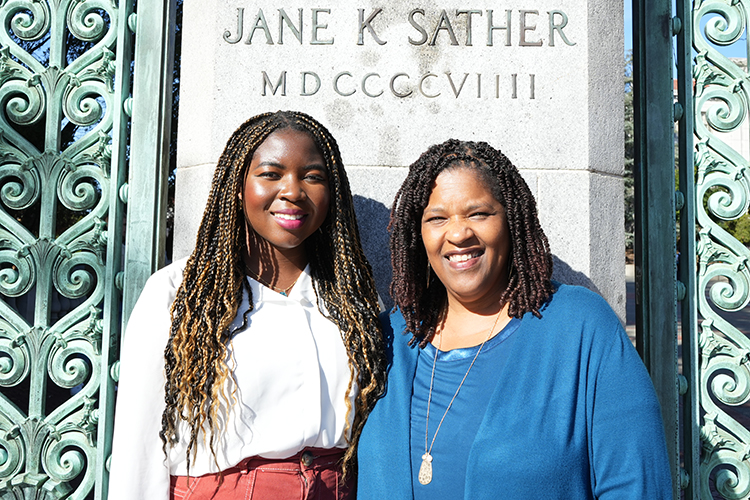
Jacqlyn Jones
Among the stops are Ida Louise Jackson Graduate House, Barbara Christian Hall, the Campanile, Sproul Plaza and the law school. Berkeley student Heaven Jones created original artwork for each stop.
“I feel like it has helped me feel welcome on campus,” Lake said. “I know a lot of students, especially students of color, Black students, feel a lot of imposter syndrome. And I feel like with this tour, just learning the history really helps combat that.
“Because when I look at all these different parts of campus — when I look at Memorial Stadium, I see Walter Gordon and how accomplished he was and all the things he did. When I walk on Sproul Plaza, I hear MLK’s speech and I think about how an undergraduate student suggested renaming the ASUC Student Union to the MLK Jr. Building.
“So just knowing this history, walking around campus and knowing it, you really feel like you belong. Black people have been here for the past 100 years and if they were doing all these amazing things then, I can surely do it now.”
Gia White, who has been on staff at Berkeley for more than 30 years — first as a student, then a staff member — came up with the idea of creating a Black history tour for the campus after writing an essay about the first African American women who attended Berkeley.
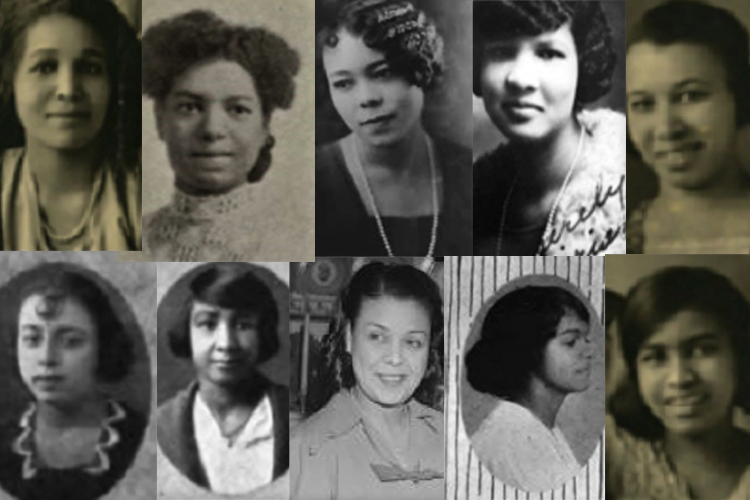
Courtesy of Gia White
“Most of these students and their families came during the Great Migration and it was a time of hope,” said White. “But then they ran up against the version of California that still had so much prejudice and so much racial and systemic bias.”
Before the self-guided tour, Gia had given several pilot Black history walking tours through campus that she had researched and designed. Then, she modified it to be the self-guided version. That’s when Daniella joined the effort and took the role of producing the audio for the tour. Now, both guided and self-guided tours are offered for the campus community and the general public.
Each stop of the self-guided tour has a two- to four-minute description. Stop 11 remembers Vivian Rogers, who, in 1909, was the first African American woman to graduate from Berkeley. She died at age 29 from typhoid fever at the very beginning of her teaching career.
“She was such a promising young woman whose father was a slave, who came to California and made his fortune as a miner in the Stockton area,” White said. “And she came to Berkeley and she got her degree in letters — they called it letters at the time.
I think about her a lot and I think about her life and how it was cut short and her potential, which was really chronicled in her home newspapers in Stockton.
And I like to tell her story because I also imagine what it must have been like for her to be on campus. She was a very brown-skinned girl. That, I’m sure, was not easy.”
Another person on the tour who Gia thinks about is Ida Louise Jackson, who has a graduate house on campus named after her.
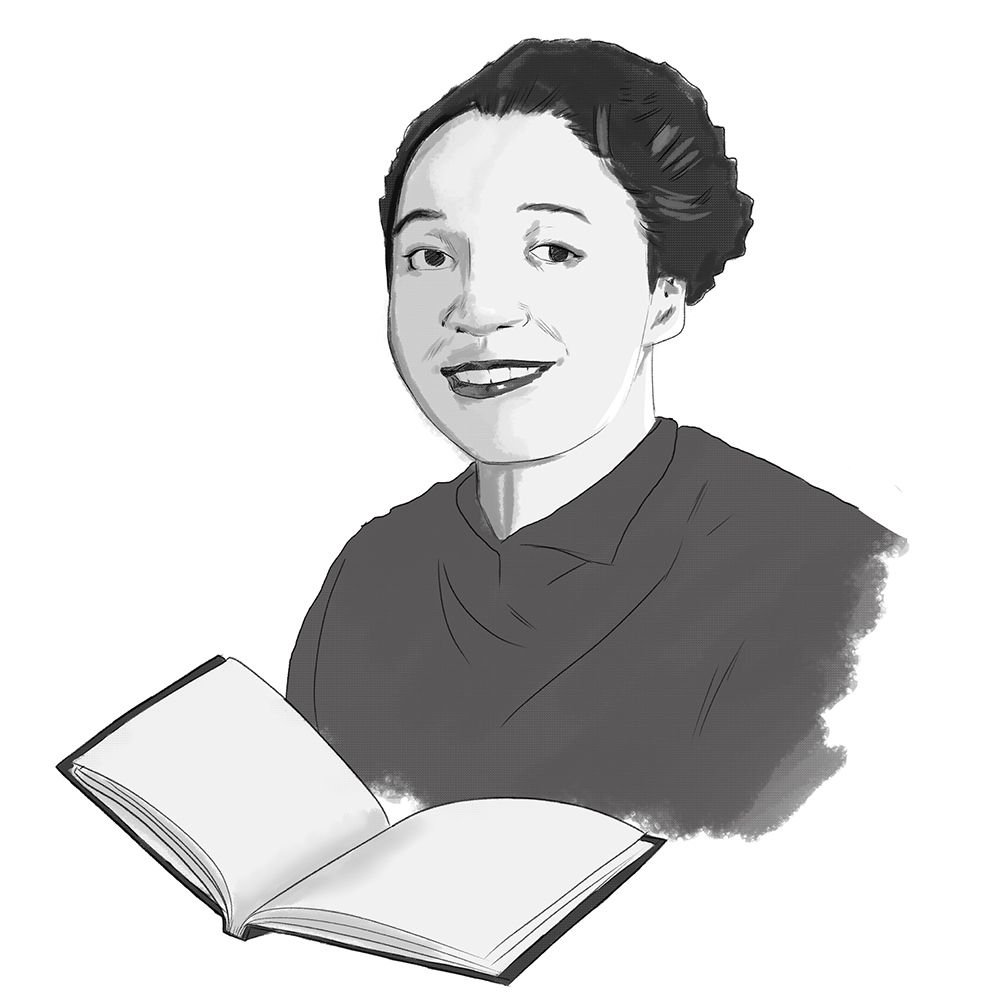
“But now, because I’m doing this research, I realize: Wait, OK, I do this number calculation of the years I was there, and I think: She was still alive. I could have interviewed her. I could have met her.
“I didn’t know anything about her, though. And I think this is the kind of information that I think, wow, we really need to capture those stories. And if it weren’t for the oral history project at the Bancroft that took her oral history and other Black alumni, we would know hardly any of this.
“So I just realize the importance of capturing those histories and passing along that information generation to generation.”
For Daniella, learning about the campus’s rich Black history has reminded her of everyone who came before her and how much they accomplished.
“I just think it’s really inspiring to think about all the things these people achieved, even when they were the only ones,” said Lake. “To be the first is a beautiful thing because you’re blazing a trail.
“But that’s also kind of terrifying, I’m sure. I mean, I can’t imagine what it feels like to be the only person who looks like you. And obviously, I have experienced it in classroom settings, but just their experience of it back then was just so much different, you know, much more hostile.”
Both Gia and Daniella hope that the Black history tour at Berkeley is only the beginning.
“I hope that, with all our work and in the future, I hope that it’s normal and the standard to know about the Black history of our campus,” Lake said. “And I hope that our website will really dive deeply into different time periods. You know, maybe you can click on the civil rights era. What was it like to be a Black student on campus then? Or the people who have visited, like MLK Jr.
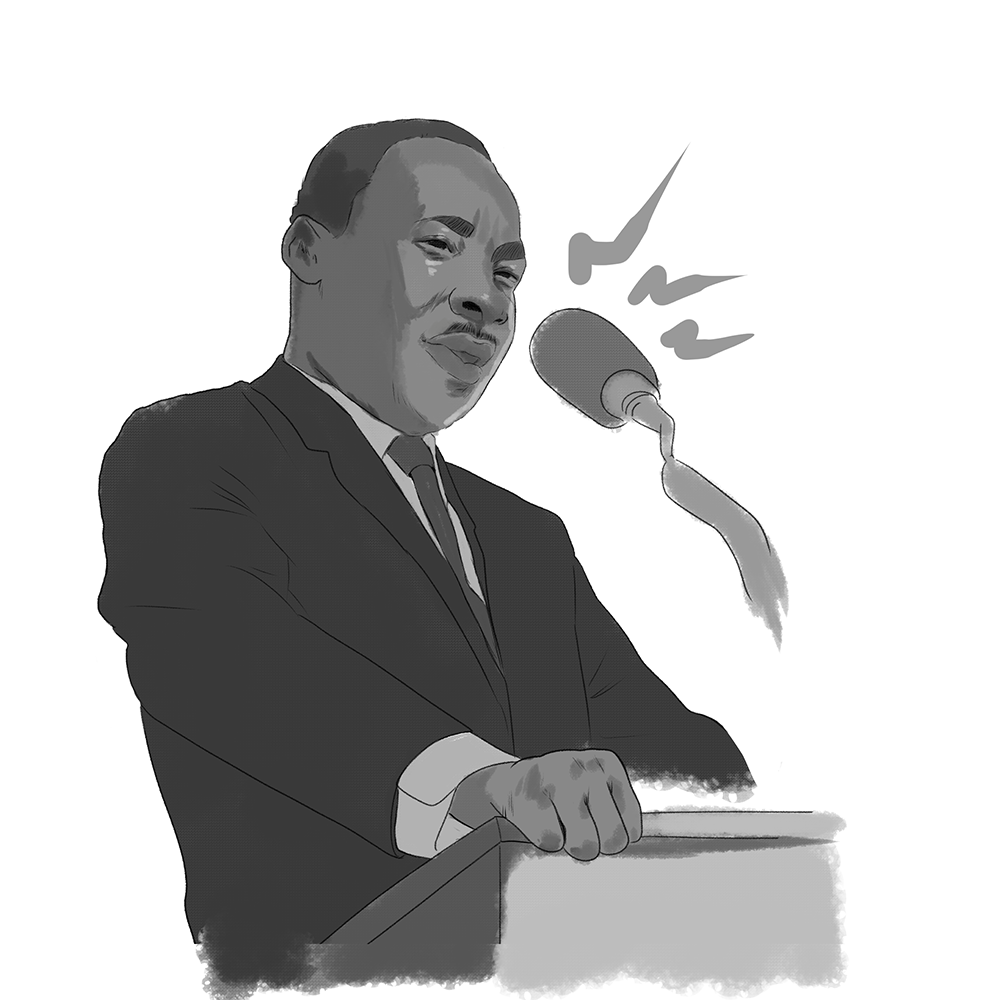
“You can look at categories of Black athletes, Black people in STEM. You can look at the history of Black Greek life. Just to see Black life on campus all in one place — that would just be so, so cool.”
“I agree with Daniella, you know, my goal and just to think 20 years from now, what’s it going to be like then?” added White. “That it would just be normal, that yeah, of course you take a Black history tour and, of course, students know their history and they know about Ida Louise Jackson and Walter Gordon and that it’s just sort of regular, like they know that Oski’s the mascot.
“And then I will be, hopefully, still around and I get to look back and say, “Wow, I had some part of that, of people knowing about this legacy, and that it inspires others and that the baton is being passed along. That would be wonderful.”
You can find the self-guided Black history tour on Black Lives at Cal’s website at blac.berkeley.edu. And soon, on the site, you’ll also be able to sign up for upcoming in-person walking tours.